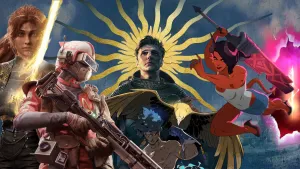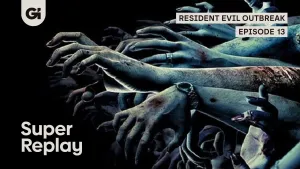Our extra-large special edition is here. Subscribe today and receive the 25% longer issue at no extra cost!
Top Of The Table – Harry Potter: Hogwarts Battle

A great licensed tabletop game builds elements of the franchise into the very structure of rules and game flow. That’s the first thing that attracted me to Harry Potter: Hogwarts Battle, and I’m happy I gave in to my interest. Built from the ground up as a journey through the seven years of Harry Potter’s life at Hogwarts School of Witchcraft and Wizardry, Hogwarts Battle constantly keeps things interesting through new cards, rules, and even game components. Equally important, the game serves as the best gradual introduction to deck-building games that I’ve encountered; whether the newcomer is a child who you hope to initiate to the game genre, or an adult player who needs the familiarity of the fun Harry Potter universe to get into the game, the smart pace of new concepts over multiple games leads to a ton of fun without the pain of long rules lectures.
Deck-building games can mostly be traced back to the excellent Dominion, first released in 2008. That wildly popular card game built on the idea of individual card decks seen in games like Magic: The Gathering, but challenged players to build their deck over the course of the game, and eliminated the collectible card dynamic in favor of consistent sets. Dominion’s core design spawned any number of other games that riffed on the concept, many of which are excellent. Some of my favorites include Ascension: Chronicle of the Godslayer, Thunderstone, and Legendary: A Marvel Deck Building Game.
Harry Potter: Hogwarts Battle, published by USAopoly, follows in the tradition of those games, with a familiar turn structure that’s easy to grasp. Two to four players each start with a small personal deck, represented by one of the heroes of the story – Harry, Hermione, Ron, or Neville – and draw some of those cards on their turn. Everyone works together to win cooperatively; either everyone wins, or the villains beat your team that session. Cards allow players to confront enemies, like Draco Malfoy or Dolores Umbridge, all while having to contend with dangerous events like the Dementor’s Kiss. Location cards like Azkaban or the Shrieking Shack are laid out on the table to present other challenging effects, and also as a way to indicate the villains’ progress toward victory.

In order to stand up to these challenges, other cards in your hand let you purchase new cards for your deck from a selection arrayed on the table in front of you. New allies like Albus Dumbledore, spells like Reparo, and items like the Sorting Hat can all be purchased over time, usually entering your discard pile. When your current deck of cards runs out, your discard pile (including the new cards you purchased) are shuffled into a new deck, and play continues.
Hogwarts Battle does little to innovate in its core play mechanics; anyone who has played a deck-building game will recognize the familiar structure of what I’ve just described. Instead, it’s the progression of play over multiple game sessions that really stands out. The game is built to be played over seven distinct sit-downs. Your first session is very simple, with only a few variants of cards, and only very basic rules. Cards reflect character appearance as they appear in the first Harry Potter movie. Villains and locations match story moments from that first year at Hogwarts.
With each passing year, not only are new cards introduced into the game, but new rules and components as well. Reach Year 3 (your third session, presuming you’ve won each previous time), and your hero card changes over to an evolved version (and image) of your favorite character. In Year Four, a new set of dice enters play, offering effects based on the different school houses like Gryffindor or Slytherin. Get up to your sixth year, and you gain new abilities based on the results of your O.W.L. Proficiencies. Every year has new twists on the formula. In every case, Hogwarts Battle does an admirable job of reflecting the events of the seven years of schooling, and simplifying them down to benchmark moments, places, and characters.
Hogwarts Battle is a movie-licensed game, which is going to be a big plus for some, and a downer for others. All of the imagery is based off the likenesses of actors, scenes, and props as they appeared in the popular film series, but that also means that there’s little in the way of original art. With that said, the surrounding box, card layout, and other elements do a good job of maintaining the Harry Potter aesthetic, with earthy tones of leather-bound books as the prevailing color scheme.

In addition, the same thing that makes Hogwarts Battle a fun experience is the thing that limits its replayability. While the game rules suggest ways to replay any one of the seven years at a higher difficulty, you’re ultimately looking at a narrative experience that has some long-term limitations. Sure, you can tackle another run at the most complex session (Year 7), but it’s sort of the equivalent of watching the final movie multiple times. For some, that won’t be a problem, but for others, after your seventh year at Hogwarts School, it will be time to graduate to other deck-building games.
To be frank, that’s just fine with me. As a game targeted mostly to players just learning the genre, I think the natural flow of seven complete sessions that are different each time is well worth the investment. After making your way through the full adventure, many players will be happy to try a different game, and perhaps return to play through a favorite year at Hogwarts a few months down the line. More than anything, it’s the smartly paced learning curve and clever implementation of Harry Potter’s wizarding world that make Hogwarts Battle a success, and a game that I can easily suggest for anyone who wants a fun tabletop interpretation of the now-classic story.
If Harry Potter isn’t your thing, you may want to check out some other recent recommendations, including selections for the best tabletop games that released in 2016. You can find a full hub of previous installments of Top of the Table by clicking on the banner below. And if you’d like to chat more about tabletop games, or get a personal recommendation, drop me a line by email or Twitter.


Get the Game Informer Print Edition!
Explore your favorite games in premium print format, delivered to your door.
- 10 issues per year
- Only $4.80 per issue
- Full digital magazine archive access
- Since 1991







